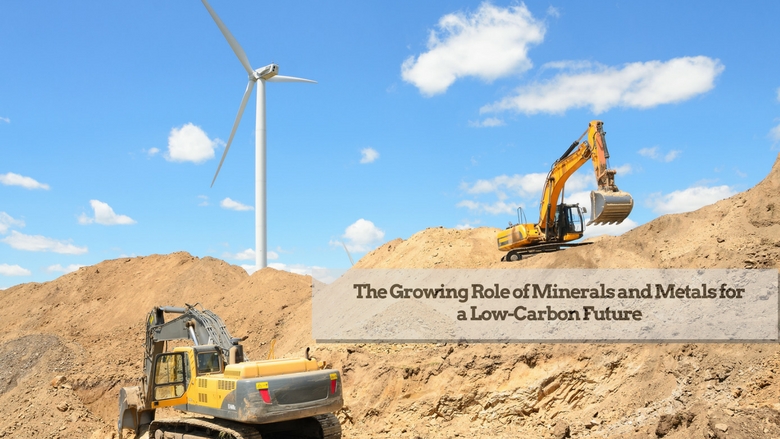Published on http://www.worldbank.org
The rise of green energy technologies required for a low-carbon future is expected to lead to significant growth in demand for a wide range of minerals and metals, such as aluminum, copper, lead, lithium, manganese, nickel, silver, steel, and zinc and rare earth minerals, according to a new World Bank report, “The Growing Role of Minerals and Metals for a Low-Carbon Future.”
The report indicates that the shift to a low-carbon future will result in opportunities for mineral-rich countries. Meaning that these countries should forge long-term strategies for sustainable mineral extraction and make appropriate investments.
Low-carbon technology requirements, and hence relevant minerals and metals demand, rises most rapidly the closer the world is to achieving the 2015 Paris Climate Agreement commitment of avoiding a 2°C rise in the global temperature. The most significant example of this being electric storage batteries, where the demand for the metals required to manufacture the batteries – aluminum, cobalt, iron, lead, lithium, manganese and nickel – grow from a relatively modest level under a 4°C rise to more than 1000 percent under a 2°C scenario.
The future demand for specific metals is not only a function of the degree to which countries commit to a low-carbon future, it is also very much driven by intra-technology choices. The wind, solar, and low-carbon technologies that emerge as most applicable and beneficial will play an important role in defining the commodity marketplace over the next 50 years.
Based on current trends, it is expected that Chile, Peru, and (potentially) Bolivia, will play a key role in supplying copper and lithium; Brazil is a key bauxite and iron ore supplier; while southern Africa and Guinea will be vital in the effort to meet growing demand for platinum, manganese, bauxite, and chromium. China will continue to play a leading role in production and reserve levels in practically every key metal required under low-carbon scenarios. India is dominant in iron, steel, and titanium, while Indonesia, Malaysia, and Philippines have opportunities with bauxite and nickel. Finally, in New Caledonia, the massive reserves of nickel, used today in electric car batteries, should not be overlooked.
Despite these initial findings, it is also apparent that many developing countries lack robust geological data on their mineral deposits. There is a clear need to develop capacity in geological mapping. For example, only Brazil, China, Malaysia and India maintain data of rare earth deposits in their territories. Africa, at this point, has very little data on rare earth metals in the entire continent.
Finally, there are also significant challenges for supplying countries with regards to the social, environmental and carbon footprint of increased mineral extraction. A growing demand for minerals and metals to supply a low-carbon future, if not properly managed, could bely the efforts and policies of supplying countries to meet national objectives and commitments regarding climate change and related sustainable development goals. Careful consideration will also need to be developed for local communities to ensure that water and ecosystems are not unduly affected.

